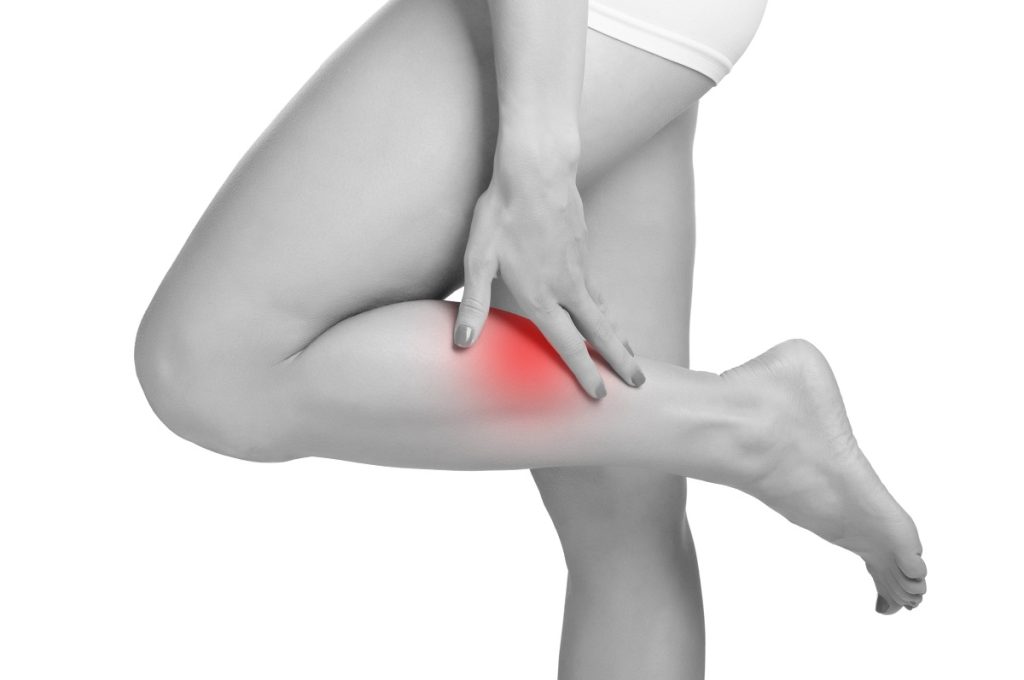- Hydrating sufficiently and maintaining a balanced diet rich in essential nutrients are crucial for preventing and managing leg cramps.
- Regular, moderate exercise and stretching can help maintain muscle health and reduce the frequency of cramps.
- Certain medications may contribute to muscle cramps as a side effect, so discussing any concerns with your healthcare provider is essential.
- Regular medical checkups are necessary to identify underlying health conditions leading to leg cramps.
- Managing leg cramps involves proactive health and lifestyle decisions, including hydration, nutrition, exercise, stretching, and consistent medical checkups.
If you’re often experiencing leg cramps, it’s important to understand that this could be your body’s way of signaling a deeper issue. These painful sensations might result from a lack of certain vitamins or dehydration or be a symptom of a more serious medical condition. Considering your diet, physical activity level, and overall health is crucial.
Lifestyle Changes
Making deliberate changes to your every day habits can significantly impact your experience with leg cramps, potentially reducing their frequency and intensity. Here are some tips:
Hydration

Proper hydration is a key factor in preventing leg cramps. When your body is dehydrated, it can cause your muscles to seize up, resulting in painful cramps. Strive to drink at least eight 8-ounce glasses of water daily, or more if you engage in physical activities or live in a hot climate. Besides water, consider beverages like coconut water or sports drinks high in electrolytes, which are crucial for muscle function.
Avoid excessive caffeinated or alcoholic beverages, as they can cause dehydration. Remember, your hydration needs can vary based on weight, activity level, and the weather, so you may need to adjust your water intake accordingly. By prioritizing hydration, you can help your body maintain its essential functions and potentially decrease the likelihood of experiencing leg cramps.
Nutrient Intake
Ensuring adequate nutrient intake is another crucial step in managing leg cramps. A deficiency in key minerals, including potassium, calcium, and magnesium, can often lead to muscle cramps. Incorporate foods rich in these nutrients into your diet, such as bananas, sweet potatoes, yogurt, and leafy green vegetables.
Additionally, vitamin D is necessary for calcium absorption and can be obtained naturally from sunlight exposure or through foods like fatty fish, cheese, and fortified dairy products. If your diet alone is insufficient, consider taking supplements after consulting a healthcare professional.
Also, aim to have a balanced diet with all essential nutrients, as protein and carbs play a role in muscle health. Just like hydration, personal adjustments may be necessary based on age, gender, and nutritional needs. Adequate nutritional intake can help prevent muscle cramps and promote overall health.
Exercise
Regular, moderate exercise is a vital aspect of maintaining muscle health and reducing the frequency of leg cramps. Activities like walking, swimming, or cycling help strengthen your muscles, improve blood circulation, and increase flexibility, all of which can reduce cramps. Stretching before and after exercising is especially beneficial, as it can help to lengthen your muscles and prevent them from tightening up, a common cause of cramps.
Yoga and Pilates can also be effective, as they emphasize muscle control and flexibility. However, avoiding over-exertion is important, as overly intense or prolonged exercise can lead to muscle fatigue and increase the likelihood of cramps. Always listen to your body, and give it the rest it needs.
While starting a new exercise routine, it’s wise to consult with a healthcare professional or fitness expert to ensure you’re exercising safely and effectively. With a balanced exercise regime, you can support your muscle health and combat leg cramps.
Stretching

Regular stretching can alleviate and prevent leg cramps by improving muscle flexibility. Before you go to bed, spend a few minutes stretching your calves and hamstrings to help deter nocturnal cramps. During the day, take short breaks for quick stretches, especially if you work at a desk or in a stationary position.
Stretching exercises like a standing calf stretch, seated hamstring stretch, and yoga poses such as Downward-Facing Dog can be particularly effective. If you’re unsure how to stretch correctly, consider working with a physical therapist or a fitness professional who can guide you.
Utilizing foam rollers or massages can also help alleviate muscle tension. Remember, consistency is key when it comes to stretching. By incorporating daily stretching into your routine, you can increase your flexibility, promote circulation, and, ultimately, reduce the occurrence of leg cramps.
Medication Review
At times, certain medications can contribute to the occurrence of leg cramps. Drugs such as diuretics, statins, or even certain asthma medications can have muscle cramps as a potential side effect. If you’ve noticed increased leg cramps after starting a new medication, it might be worth discussing this with your healthcare provider.
They can review your current medications, assess potential side effects, and may suggest alternatives if appropriate. However, never stop taking prescribed medication without consulting your healthcare provider. It’s also beneficial to ask about potential drug interactions when starting a new medication.
These interactions can sometimes affect the absorption of essential nutrients, indirectly leading to muscle cramps. Regularly reviewing your medications with your healthcare provider lets you stay informed about your treatment and manage potential side effects, including leg cramps.
Medical Checkup
Regular medical checkups are essential in understanding and managing leg cramps, especially if they are frequent or severe. Healthcare professionals can help identify underlying medical conditions that may be causing your cramps. Certain health issues, such as diabetes, thyroid disease, and nerve disorders, can lead to muscle cramps.
One of the key aspects that a medical professional might investigate is the venous insufficiency condition. This occurs when your leg veins have difficulty sending blood back to your heart. As a result, blood pools in your legs, causing symptoms like pain, swelling, and leg cramps.
Regular checkups and screenings can help detect problems like venous insufficiency early, allowing for timely treatment and possible prevention of further complications. By engaging in regular medical checkups, you can comprehensively understand your health and receive necessary medical interventions to manage leg cramps.
In conclusion, taking charge of your health is crucial in managing leg cramps. Prioritize hydration, balanced nutrition, exercise, stretching, and routine medical checkups. Remember the impact of medications, and discuss any concerns with your healthcare provider. Remember, you have the power to make lifestyle changes that can alleviate your discomfort and enhance your well-being.

